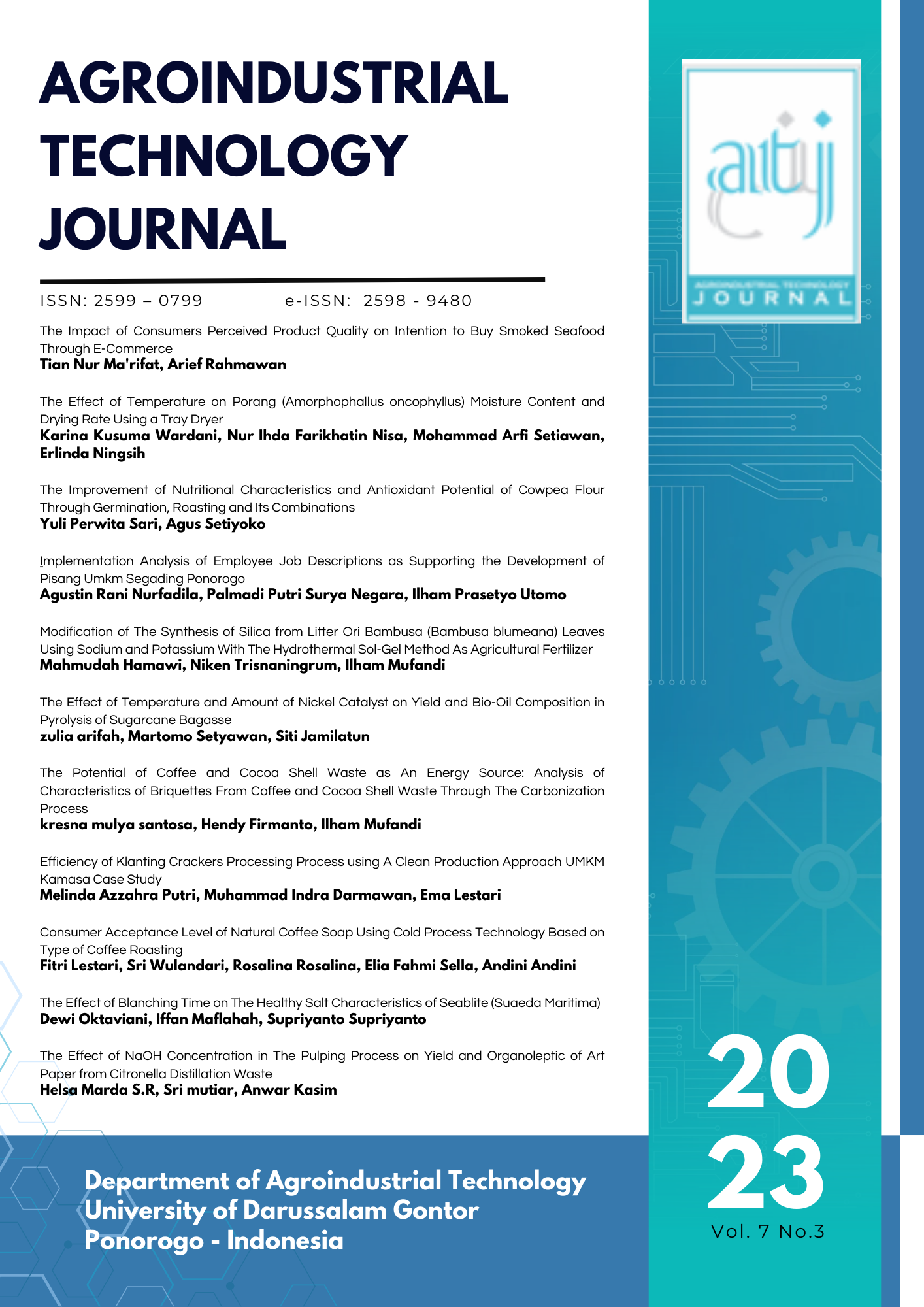The Effect of Temperature and Amount of Nickel Catalyst on Yield and Bio-Oil Composition in Pyrolysis of Sugarcane Bagasse
DOI:
https://doi.org/10.21111/atj.v7i3.10744Abstract
The abundance of bagasse waste from sugar cane processing needs special attention apart from being used for direct combustion in boilers. Sugarcane bagasse waste can be further processed by pyrolysis so that it will produce bio-oil, bio-gas and char products which have the potential to be used as fuel or high-value chemicals. Pyrolysis of bagasse was carried out to study the effect of temperature and the ratio of the amount of Ni catalyst on the yield and composition of bio-oil in the form of oxygen to carbon (O/C) ratio, hydrogen to carbon (H/C) ratio, higher heating value (HHV), content of oxygenated compounds and range of aromatic compounds. Pyrolysis of bagasse is carried out in a fixed bed reactor with a heating rate of 10-12 ºC/minute to the desired temperature. Pyrolysis with and without a catalyst was carried out at a temperature range of 300-600 ºC with a variation of Ni catalyst weighing 2.5 grams and 5 grams. Liquid product analysis was tested using GCMS (Gas Chromatography and Mass Spectroscopy) to determine the compound content in the liquid product resulting from pyrolysis of sugarcane bagasse. Bio-oil resulting from pyrolysis of sugarcane bagasse contains several dominant compounds including alcohol, fatty acids, esters, carotenoids and levoglucosan. However, the yield of sugarcane bagasse bio-oil without catalyst was dominated by high levoglucosan, namely 70.52%. Meanwhile, the bio oil resulting from pyrolysis which varied with 2.5 grams and 5 grams of Ni catalyst was dominated by esters, namely 69.07% and 81.68% respectively. These compounds have different chemical properties and applications, and understanding the composition of bio-oil can help in deciding how to use it efficiently.Downloads
Submitted
Accepted
Published
How to Cite
Issue
Section
License

This work is licensed under a Creative Commons Attribution-NonCommercial-ShareAlike 4.0 International License.
The author whose published manuscript approved the following provisions:
1. The right of publication of all material published in the journal / published in the Agroindustrial Technology Journal is held by the editorial board with the knowledge of the author (moral rights remain the author of the script).
2. The formal legal provisions for access to digital articles of this electronic journal are subject to the terms of the Creative Commons Attribution-NonCommercial-ShareAlike 4.0 International License (CC BY-NC-SA 4.0), which means that Agroindustrial Technology Journal reserves the right to save, transmit media or format, Database), maintain, and publish articles without requesting permission from the Author as long as it keeps the Author's name as the owner of Copyright.
3. Printed and electronically published manuscripts are open access for educational, research and library purposes. In addition to these objectives, the editorial board shall not be liable for violations of copyright law.



